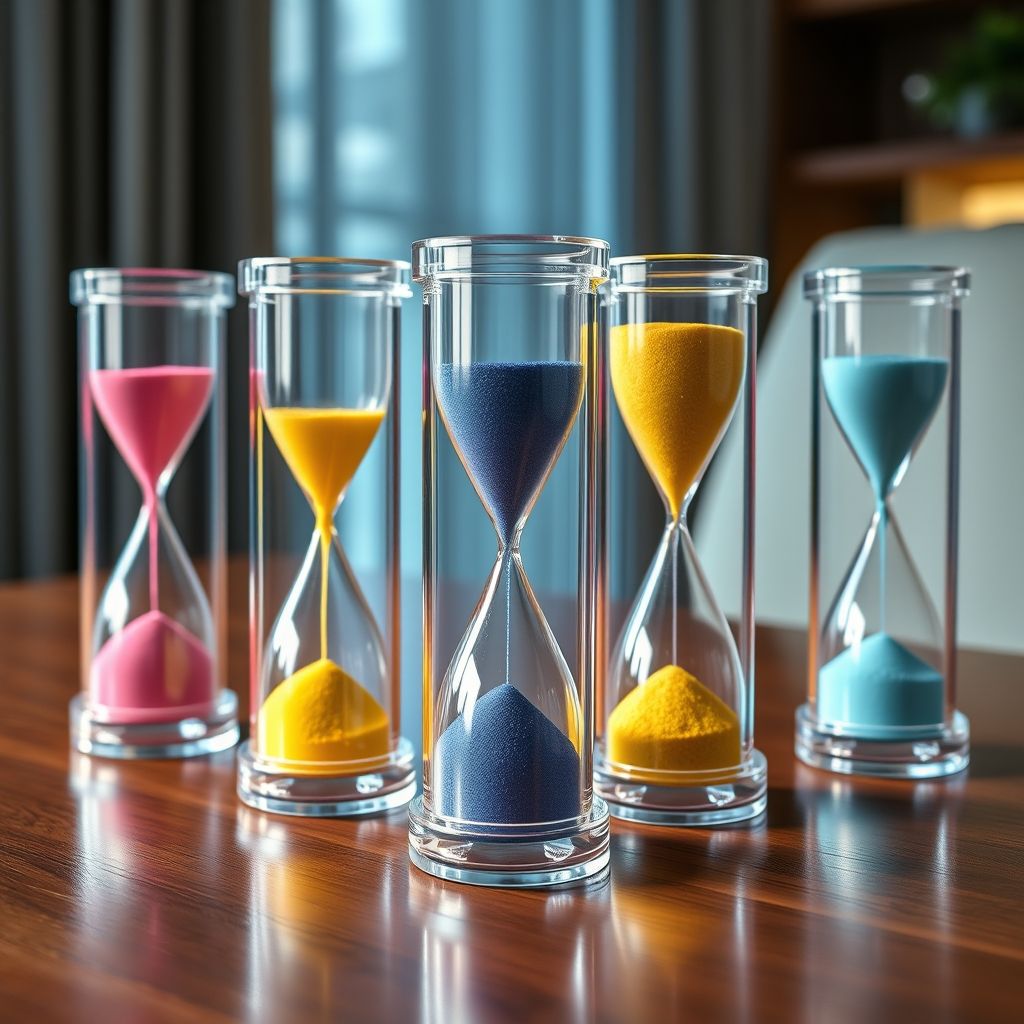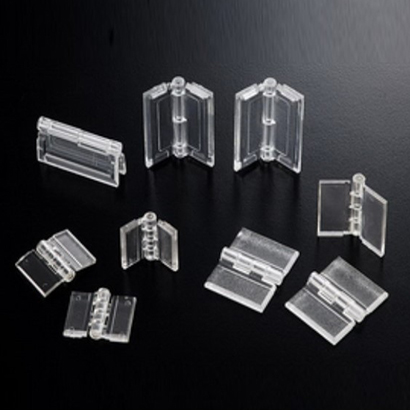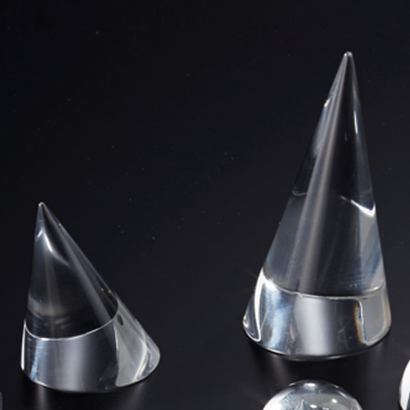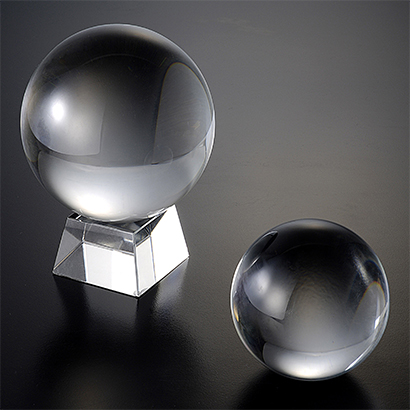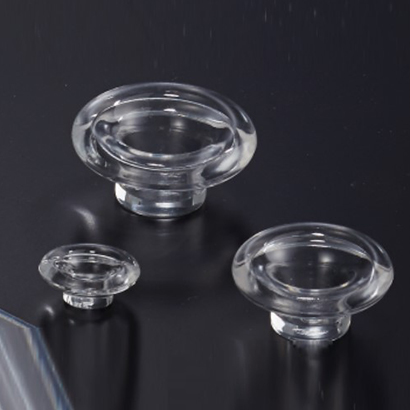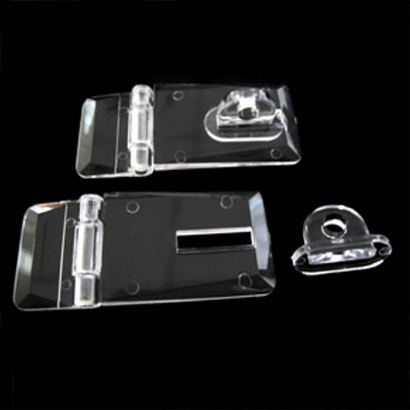What is Acrylic (PMMA) ?
Q: What is Acrylic (PMMA)?
Acrylic is called "polymethyl methacrylate" Poly (methyl methacrylate), referred to as PMMA, also known as plexiglass, has the reputation of "plastic crystal", and is often used as a substitute for glass.
92% light transmittance, good weather resistance, easy machining, can be adhered with chloroform, and suitable for all kinds of painting and printing (suitable for acrylic materials).
The basic chemical structure of acrylic resin is acrylic acid (Acrylic acid), which is a by-product of petroleum extraction. The scientific name of acrylic resin is Poly Methyl Methacrylate. In 1920,
Rohm And Hass Company developed a synthetic resin.
The chemical substance whose chemical molecular structure is CH2=CH(CH3)COOCH3 can be regarded as an ester compound obtained by the reaction of methanol and methacrylic acid, commonly known as acrylic monomer
(MMA).
A monomer refers to a "chemical substance" with a "low and fixed molecular weight" that can be polymerized into a polymer of high molecular weight, or the basic unit that constitutes a polymer. For example,
methyl methacrylate (MMA), which has a molecular weight of 100.1, can be obtained as a high molecular weight homopolymer or copolymer by various polymerization techniques. Polymer refers to high molecular weight substances, such as polymethyl methacrylate
(PMMA), usually the molecular weight obtained by the casting method is greater than 1 million (Plastic pellets for extrusion and injection)
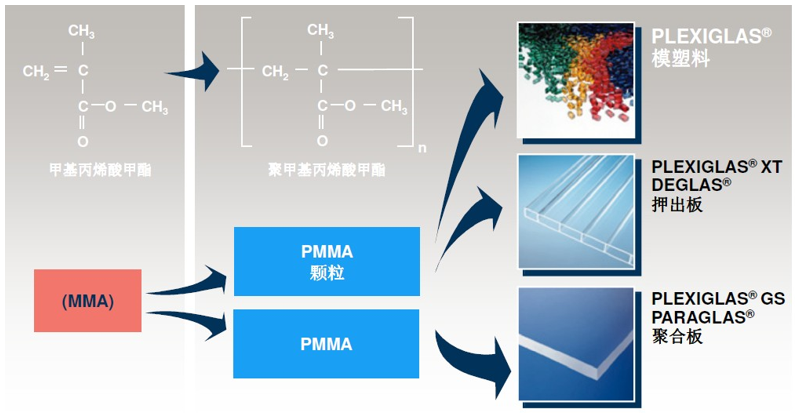
Transparency: Acrylic is very transparent, similar to glass. This makes it ideal for creating transparent or translucent products such as display windows, display boards, signage, etc.

Acrylic refers to a type of plastic material that is derived from acrylic acid. It is commonly used in various applications due to its versatility and desirable properties. Acrylics can be found in both
liquid and solid forms, and they are widely used in industries such as manufacturing, construction, automotive, textiles, and art.
Additionally, acrylic sheets or panels are commonly used in applications where transparency, impact resistance, and weatherability are required. These sheets can be used as a substitute for glass in certain
applications like windows, signage, displays, and protective barriers. Acrylic sheets come in various thicknesses and can be easily shaped and fabricated for specific purposes.
Here are some important properties about Acrylic :
Transparency: Acrylic is very transparent, similar to glass. This makes it ideal for creating transparent or translucent products such as display windows, display boards, signage, etc.
Weather Resistance: Acrylic has good weather resistance to sunlight and climate changes in the atmosphere. It is not prone to yellowing, fading or becoming brittle due to prolonged exposure
to sunlight.
Lightweight: Compared to glass, acrylic is lighter. This makes it more suitable in applications requiring lightweight construction, while also aiding transportation and installation.
Ease of Processing: Acrylic is fairly easy to cut, shape, and process. This material can be produced in various forms, including sheets, tubes, profiles, etc., and can meet the needs of
different shapes and sizes.
Chemical resistance: Acrylic is highly resistant to many chemicals and is not easily corroded by acids and alkalis. Therefore, it is widely used in laboratories, medical equipment, and chemical
industries.
Thermoformability: Acrylic can be thermoformed under certain heating conditions, so manufacturers can make products of various shapes according to needs.
Colorful: Acrylic can be dyed into various colors and has high gloss, which makes it widely used in art, decoration and other fields.
Impact resistance: Acrylic is more tough than glass and has better resistance to impact, reducing the risk of breakage.
Overall, acrylic is a versatile material with diverse applications, ranging from art to industrial and commercial uses.
Further Reading:PMMA V.S. GLASS
Further Reading:PMMA V.S. GLASS
Related Applications
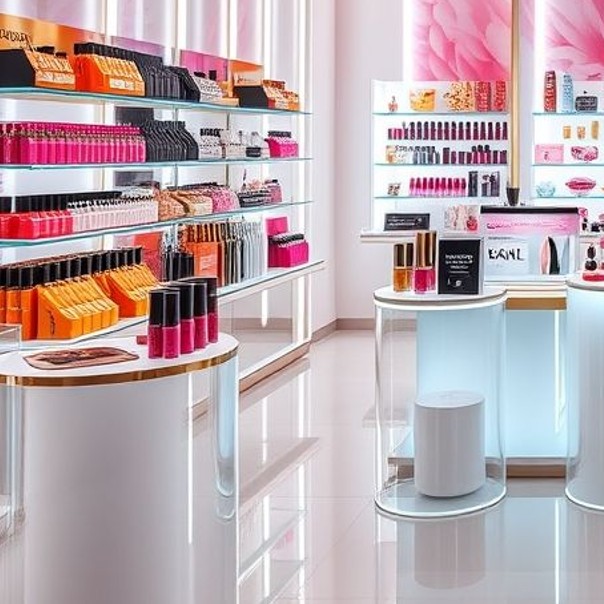
Counter Display Application
Acrylic display stands are a common tool for displaying and displaying products. They are widely used in commercial environments. They can display various commodities such as commodities, product samples, stationery, jewelry, cosmetics, mobile phones and electronic products to enhance the value of products.

Fence Design Application
This design uses acrylic materials to build fences, replacing traditional brick walls. Its transparent or translucent characteristics allow light to pass through and produce unique visual effects. Although the acrylic fence is transparent, its The materials are generally strong and durable, with good resistance to pressure and impact. This makes it no less safe than traditional fence materials.
.jpg)
Outdoor Lighting Applications
The material can be used as a lamppost or light column, providing a unique and modern light effect, however acrylic has excellent weather resistance and durability, making it ideal for outdoor lighting applications if set up in parks, gardens or courtyards , can create a charming lighting atmosphere, elevate the night scene to a new level, and add personalization and artistry to outdoor spaces.

Welcome Wall Design
The acrylic tube back wall design uses transparent acrylic tube material sandblasting and LED lighting to create a unique and modern background, enhance the atmosphere of the space and attractive visual effects, making the entire back wall full of life and vitality.

.jpg)
